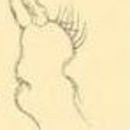zh-TW
在導航的名稱


"For distinguishing this genus from the other members of the family it is convenient to remember that Alcirona alone has the apex of the outer plate in the first maxillae armed with two spines, that Tachaea alone has the joints of the maxillipeds reduced to six, apparently by coalescence of the second and third, and that in Lanocira the second joint of the maxillipeds (leaving out of count the expansion in the female) is very little longer than broad, but very much longer than broad in Corallana." (Stebbing, 1904)
"Dana, in describing Corallana hirticauda, from the coral reefs of Tongatabu, writes as follows ' Body moderately narrow, posterior half of back to extremity of abdomen hirsute. Head a little transverse. Eyes large. Antennae very unequal; second pair long, reaching to fifth segment of thorax ; flagellum about eighteen-jointed ; first pair not much longer than base of second. Abdomen six-jointed, last segment triangular; sides straight; extremity rounded. Caudal stylets not extending beyond abdomen, branches obtuse, outer much the narrower, not longer than the inner. Feet short setulose.' …….
The body is depressed, so that here, as in other species of the genus, it shows the side-plates even in a dorsal view. The very hirsute telsonic segment has bisinuate sides converging to a rather broad slightly convex apex which carries eight spines.
The first antennae are prominent and contiguous at the base, with a broad, not very long, composite basal joint, only a little longer than the next or true third joint. The flagellum has 11 joints, most of them carrying sensory filaments, the first joint much shorter than the second. The second antennae have the first three joints very short, the fourth subequal in length to the fifth, widest at its base, this character appearing in both sexes and the young, but most developed in the male. The joints of the flagellum numbered 21 in one male specimen, but only 15 in another, 20 in a female, 14 in a little young specimen.
The mandibles end in a short uncinate tooth accompanied by a small trifid plate; there is a slight marginal prominence, perhaps representative of a vanished molar; the second joint of the palp is the longest, both this and the third being in the distal part fringed with setiform spines.
The first maxillae have a narrow inner plate, slightly expanded at its apex; the outer plate ends in a strong unciform tooth.
The second maxillae are feeble, simple, with narrowly rounded apex.
The maxillipeds are narrow, only the second joint elongate, the fourth and fifth with length and breadth subequal in the male but broader than long in the female, the sixth and seventh joints small in both sexes.
The first gnathopods are short and stout, with four robust spines on the fourth joint, between which and the sixth joint the fifth makes very little show. The spines on the sixth joint are not robust. The finger is curved with a strong unguis.
The second gnathopods have the fifth joint very short but quite distinct, being otherwise very similar to the first gnathopods.
The first peraeopods are very like the second gnathopods. In the following pairs the fifth joint attains greater importance, and the joints from the third to the sixth have longer spines and a greater variety. In the last three pairs the fifth joint carries several spinose spines on the apical border.
The very broad inner ramus of the uropods in addition to numerous setae carries nine spines on the broadly rounded distal margin. The longer but very much narrower outer ramus has a fringing of long setae with spines at intervals, the apex subacute.
Colour, a pale ground sometimes strongly marbled with dark-brown stellate Hecks, sometimes carrying only more or less distant spots of brown." (Stebbing, 1904)
"Minikoi, from rotten log in the lagoon, some of them marked as coming from borings (possibly of Teredo) in the rotten wood. With them were some specimens of Limnoria." (Stebbing, 1904)
"A specimen here and there a little exceeded the length of 10 mm., but as a rule specimens, even those loaded with young ones, did not reach fully 9 mm. Dana gives the length of his species as nearly five lines, which may be reckoned as equivalent to 10 mm. Schiodte and Meinert describe an ovigerous female of Dana's species, which was 6.5 mm. long. Of their own species the ovigerous female described was 8.5 mm. in length, and the ' virgo ' 9 - 9.5. As they had two specimens of the latter form, it may be inferred that they differed slightly in size. In their ' conspectus specierum ' these authors distinguish C. hirticauda as having ' Cauda media obscure bisulcata vel subaequata ' and ' Oculi aequati vel subaequati ' from C. hirsuta, with ' Cauda media manifesto bisulcata ' and ' Oculi manifesto granulati.' In the present collection the bisulcation of the pleon is quite obscure, but whether the eyes are less granular than in Schiodte and Meinert's specimens I have no means of determining." (Stebbing, 1904)